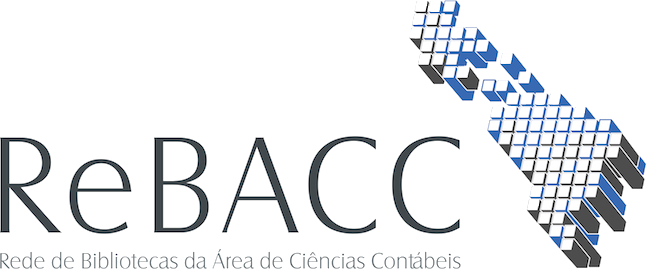Use este identificador para citar ou linkar para este item:
http://rebacc.crcrj.org.br/handle/123456789/4266| Título: | Causality study of financial leverage and operational efficiency in publicly traded brazilian companies in the post “plano real” period ESTUDO DE CAUSALIDADE DA ALAVANCAGEM FINANCEIRA E EFICIÊNCIA OPERACIONAL EM EMPRESAS BRASILEIRAS DE CAPITAL ABERTO NO PERÍODO PÓS-PLANO REAL |
| Palavras-chave: | Post-Real Plan; Non-Financial companies; Financial Leverage; Cost of Capital;Operational Efficiency; |
| Editora / Evento / Instituição: | REVISTA DE CONTABILIDADE DO MESTRADO EM CIÊNCIAS CONTÁBEIS DA UERJ |
| Descrição: | This paper aims to examine the cause and effect relationship of the indebtedness level and the structure of assets of non-financial companies of open capital in Brazil, highlighting the differences between these companies in the post-Real Plan period. The objective of this study was to demonstrate the application of the Pecking Order theory, proposed by Myers (1984), which states that the most profitable companies seek to use primarily the resources generated by their own operations, then the external debt and finally, the emission of shares. The results of this paper corroborate with the Traditionalist School, which states that there is an optimum capital structure that permits the maximization of the market value of the company. It should be noted that in this case, the company's value was not obtained through the present value of future cash flows discounted at a rate that reflects the opportunity cost of capital of shareholders employed in the company but based on past observations. In practice some findings support the results. The resources of third parties (bank loans, liabilities) are scarce. Moreover, the capital of Brazilian third parties of shortterm (turn over) is ‘more expensive’ than of long term: definitely, the capture cost in Brazil is a function of the source of resource and not of the associated risk. Keywords: Post-Real Plan; Non-Financial companies; Financial Leverage; Cost of Capital; Operational Efficiency Este trabalho se propõe a estudar a relação de causa e efeito do nível de endividamento e a estrutura de ativos de empresas não-financeiras de capital aberto no Brasil, evidenciando as diferenças existentes entre estas empresas para o período pós-Plano Real. O objetivo deste trabalho foi o de comprovar a aplicação da teoria do Pecking Order, proposta por Myers (1984), que afirma que as empresas mais lucrativas buscam utilizar prioritariamente os recursos gerados pelas próprias operações, depois o endividamento externo e por fim, a emissão de ações. Os resultados dessa pesquisa corroboram com a chamada Escola Tradicionalista, que afirmava haver uma estrutura ótima de capital que possibilitava a maximização do valor de mercado da empresa. Deve-se ressaltar que nesse caso, o valor da empresa não foi obtido por meio do valor presente dos fluxos de caixa futuros descontados a uma taxa que reflita o custo de oportunidade do capital dos acionistas empregados na empresa e sim com base em observações passadas. Na prática algumas constatações sustentam os resultados. Os recursos de terceiros (empréstimos bancários, passivos) são escassos. Além disso, o capital de terceiros brasileiro de curto prazo (giro) é ‘mais oneroso’ do que de longo prazo: definitivamente, o custo de captação no Brasil é função da fonte do recurso e não do risco associado. Palavras-Chave: Pós-Plano Real; Empresas Não-Financeiras; Alavancagem Financeira; Custo de Capital; Eficiência Operacional. ABSTRACT This paper aims to examine the cause and effect relationship of the indebtedness level and the structure of assets of non-financial companies of open capital in Brazil, highlighting the differences between these companies in the post-Real Plan period. The objective of this study was to demonstrate the application of the Pecking Order theory, proposed by Myers (1984), which states that the most profitable companies seek to use primarily the resources generated by their own operations, then the external debt and finally, the emission of shares. The results of this paper corroborate with the Traditionalist School, which states that there is an optimum capital structure that permits the maximization of the market value of the company. It should be noted that in this case, the company's value was not obtained through the present value of future cash flows discounted at a rate that reflects the opportunity cost of capital of shareholders employed in the company but based on past observations. In practice some findings support the results. The resources of third parties (bank loans, liabilities) are scarce. Moreover, the capital of Brazilian third parties of shortterm (turn over) is ‘more expensive’ than of long term: definitely, the capture cost in Brazil is a function of the source of resource and not of the associated risk. Keywords: Post-Real Plan; Non-Financial companies; Financial Leverage; Cost of Capital;Operational Efficiency. |
| URI: | http://rebacc.crcrj.org.br/handle/123456789/4266 |
| Outros identificadores: | http://www.atena.org.br/revista/ojs-2.2.3-06/index.php/UERJ/article/view/615 |
| Aparece nas coleções: | Revista de Contabilidade do Mestrado em Ciências Contábeis da UERJ |
Arquivos associados a este item:
Não existem arquivos associados a este item.
Os itens no repositório estão protegidos por copyright, com todos os direitos reservados, salvo quando é indicado o contrário.

